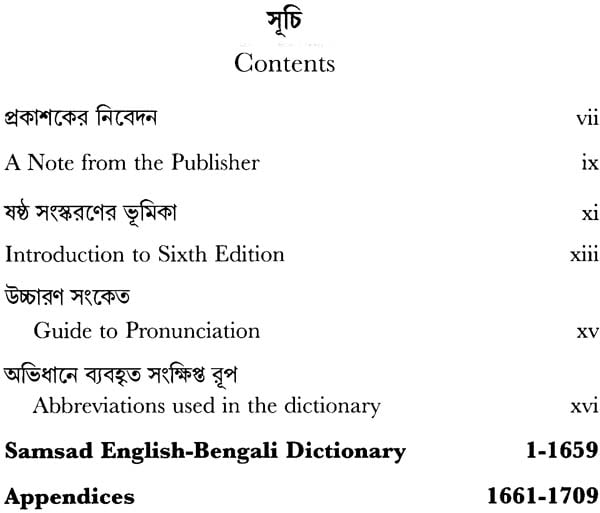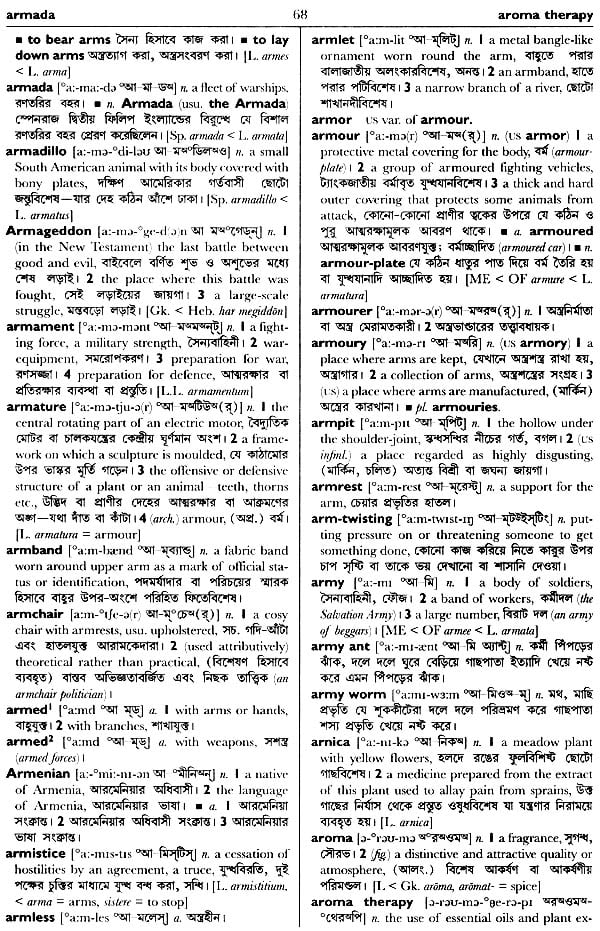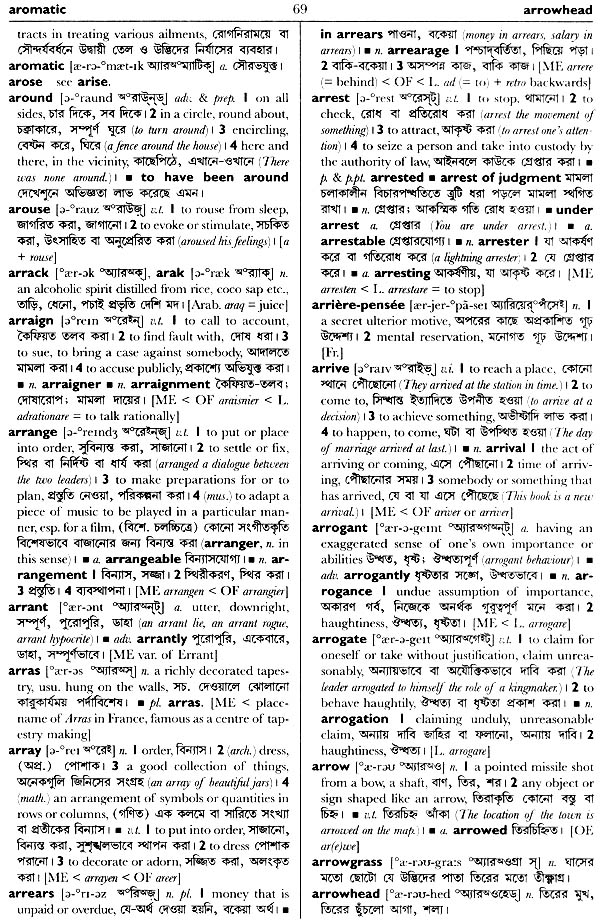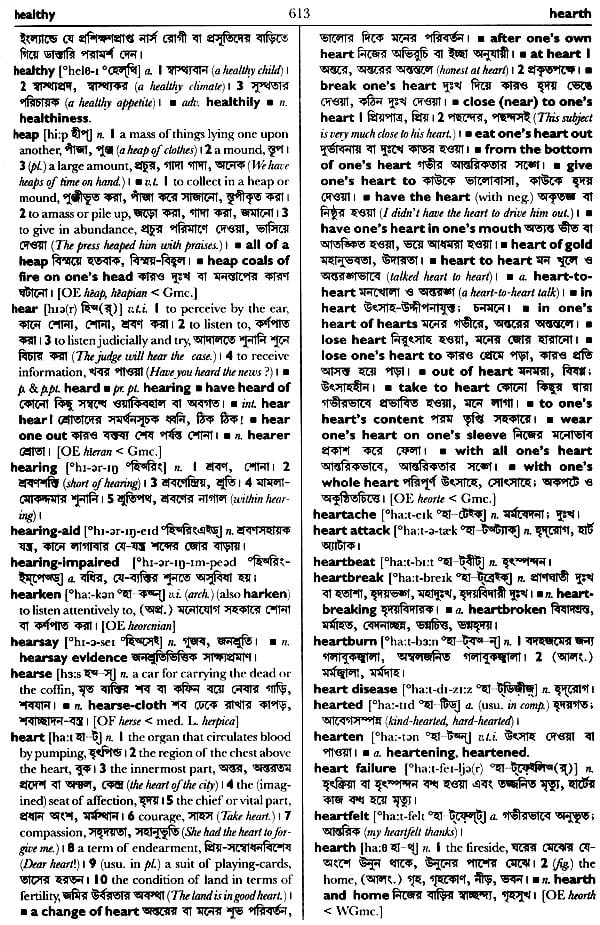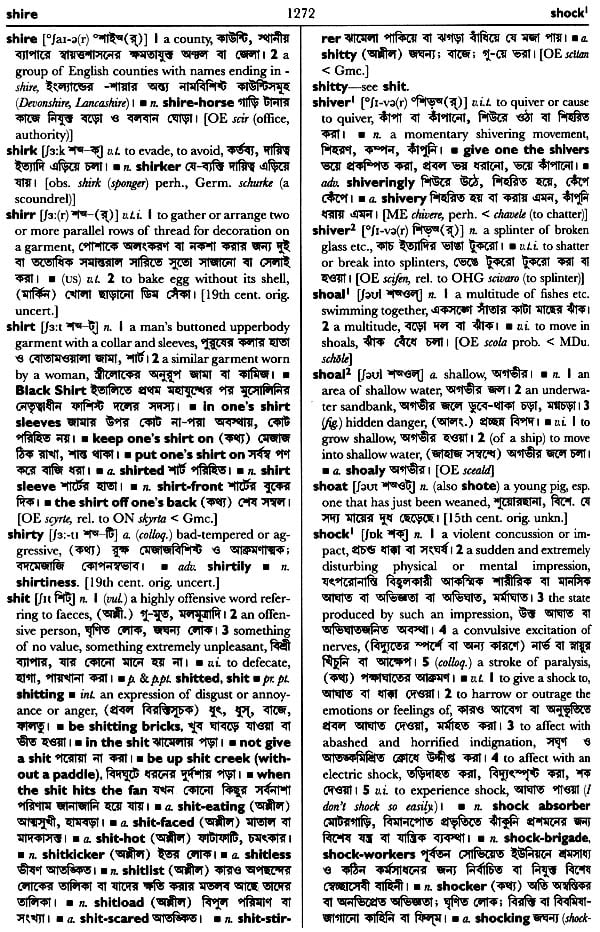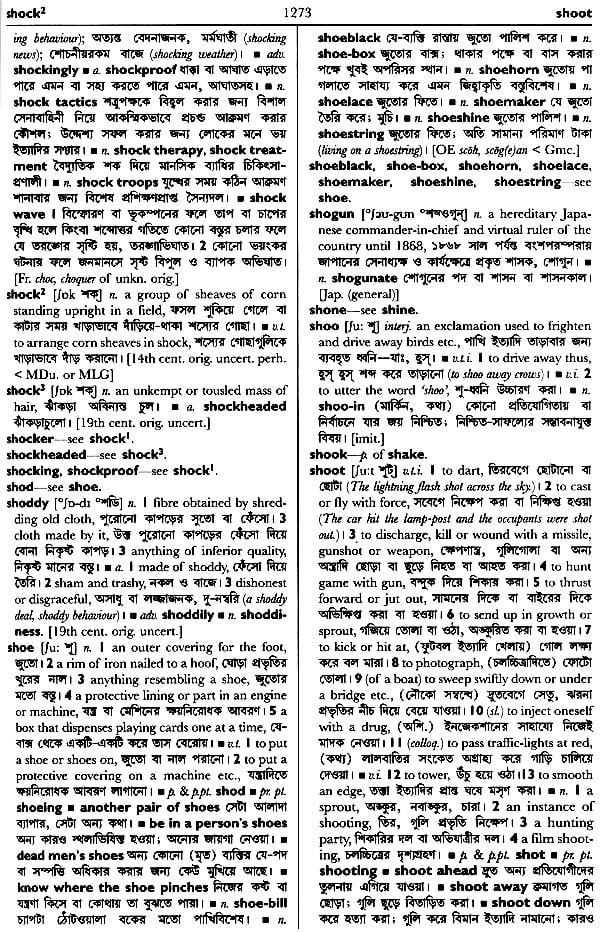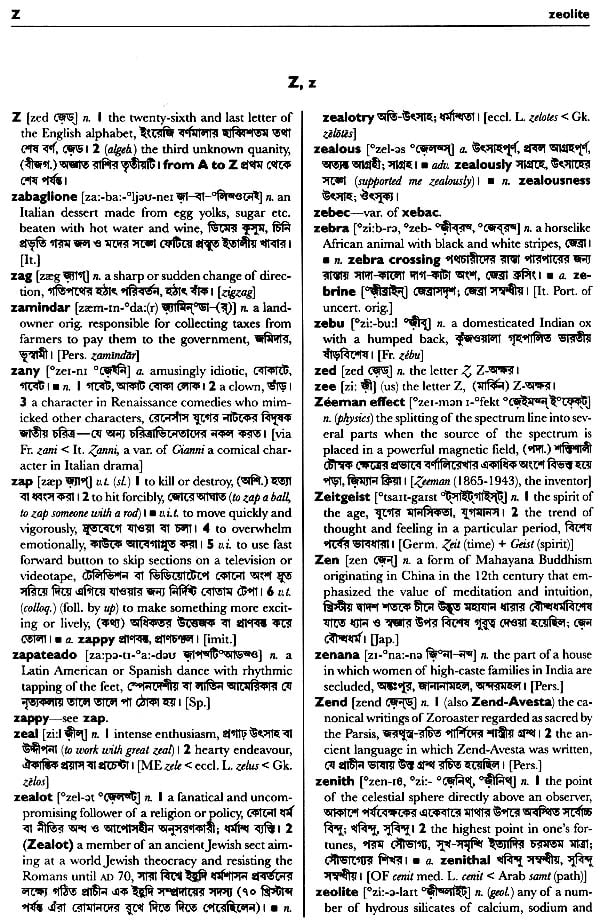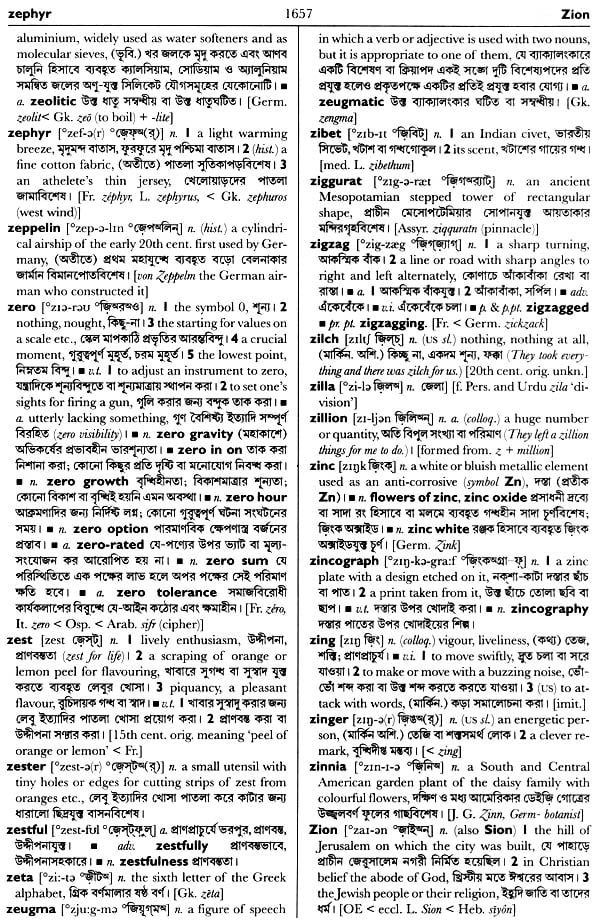
Samsad English Bengali Dictionary: Revised and Enlarged Fifth Edition
Book Specification
| Item Code: | IDE938 |
| Author: | Compiled By: Late Sailendra Biswas, Revised By: Sri Subodhchandra Sengupta & Late Sudhangshukumar Sengupta Edited By: Sri Birendramohan Dasgupta |
| Publisher: | Shishu Sahitya Samsad Pvt. Ltd. |
| Language: | English |
| Edition: | 2001 |
| ISBN: | 8185626006 |
| Pages: | 1367 |
| Cover: | Hardcover |
| Other Details | 8.5" X 5.75" |
| Weight | 1.90 kg |
Book Description
First published in 1959, this popular English-English-Bengali dictionary has gone through several revisions over more than five decades. Originally compiled by Sailendra Biswas, it has been revised by scholars and lexicog- raphers like Dr Subodhchandra Sengupta, Sudhangshukumar Sengupta and Birendramohan Dasgupta, who had taken all care to record all the significant developments in the English vocabulary till 1980. In 2001, the Samsad came out with a supplementary volume covering the new words that had entered the language in the last three decades of the twentieth century, and the new meanings that had grown around several old words, with the radical changes in almost every field of human concern in this fast evolving period of human history. By the time the supplement was incorporated in a revised version of the Fifth edition in 2006, the bound- aries of both the languages had shifted considerably. Work on the Sixth edition had already started, and there was a realization that if the dictio- nary hoped to capture the fast changing scenario, it could no longer be left to a single lexicographer plodding away on a lone mission. The Samsad mobilized a team of lexicographers at this point, and the present edition is a joint product laboriously put together by the team that is identified else- where.
A bilingual dictionary serves the needs of a wide range of users- learners, readers, translators, writers and all those who have to negotiate with and between the two languages in the course of their professional engagements. There is thus the temptation to be over-inclusive, with the danger of the volume becoming unwieldy, making the user's search all the more cumbrous. The editorial team had to keep these considerations in mind in both their selection of entries and the definition of words.
The major departures in the sixth edition have been in the kind of Bengali used; the phonetic signs for pronunciation in both Bengali and English; the use of a frequency test to single out derivatives more com- monly used for independent entries (rather than inclusion in a common entry under the originary word); a larger body of specialized and techni- cal words in different disciplines; and in its focus on direct synonyms in preference to elaborate descriptive definitions.
Earlier editions of the dictionary had used the more formal, socalled sadhu Bangla, which has over the years given way to the chalita Bangla, with its simpler, more colloquial use of verbs. The sixth edition follows the course of linguistic history, and offers definitions in the chalita mode.
Unlike Bengali, English pronunciation is stressed, the stress often playing a significant role in the generation of meaning. In the phonetic transcrip- tion of the words, we follow the International Phonetic Alphabet (revised to 2005), followed by a system for readers in Bengali we have devised our- selves for this dictionary, and have explained in the Guide to Pronuncia- tion. Going by what is known as the Maximal Onset Principle (cf.Jones et al, Cambridge English Pronouncing Dictionary, 18th Edition, Cambridge: CUP, 2011), we use the sign at the beginning of the stressed syllable, the syl- lables separated by hyphens (only in the English transcription).
We have provided independent entries for derivatives in frequent use to help the reader hit the word he/she is looking for with the least trouble and minimal navigation.
With new specialized disciplines and areas of study opening up with the knowledge explosion worldwide, facilitated by the new technology, there has been a general growth of curiosity across and beyond borders, with readers belonging to a discipline ready to step into some other discipline, facing the challenge of unfamiliar terms. Keeping this cross-disciplinary curiosity in view, we have taken care to offer clear definitions of several such terms that should help such readers to go deeper into a new field of study. At the same time we have economized on definitions for more com- mon terms in popular use, where synonyms are more than enough, and offer an easy way out to potential translators.
Every edition of such a dictionary is a tentative work, a necessary step in the continuing transactions between two languages, especially in a case like the present one, where the historical and cultural transactions between the languages under consideration have had a civilizational dimension, and a long and vibrant continuity. As the transactions continue, and the two languages carry marks and signs of class distinctions and distances, the need for immediate translation of concepts, ideas and terms carries democratic urgency. One can only hope that the dictionary in its latest incarnation will fulfil the expectations that one has by now come to associ- ate with a new Samsad dictionary.
